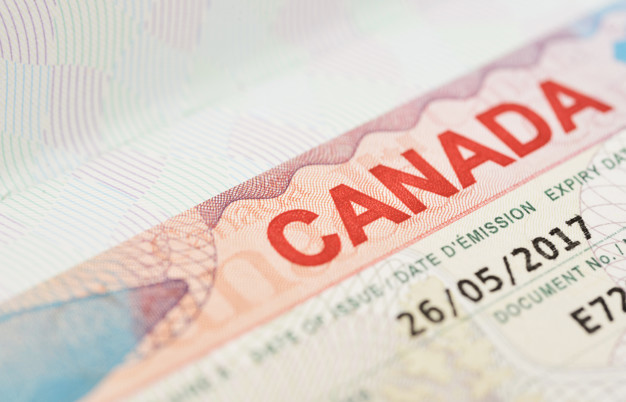

Immigration was impacted by COVID travel restrictions globally. Canada could not welcome 341,000 immigrants as it planned to receive in 2020. It could only welcome 184,370 permanent residents last year, the lowest since 1998. Many were unable to travel to Canada before their travel documents expired and resulted in low numbers.
In the wake of the pandemic, the Canadian economy runs on a deficit of hundreds of billions of dollars, and unemployment is rampant. The question often asked is, ‘Why to bring in more immigrants with the current rate of unemployment and a dipped economy.’ The answer may make sense concerning the following points.
Canada is aware of the contributions of the immigrants to the well-being of the nation. Canada relies on immigrants to work in the healthcare sector, maintain supply chains, and expand businesses that improve the economy. Estimates reveal that 33% of all business owners in Canada with paid staff and 25% of workers in the country’s health sector are immigrants.
The Government of Canada has set out plans to increase the number of immigrants to increase economic growth in the country and create jobs for middle-class Canadians.
When considering the job market, Canada has not reached anywhere near its pre-pandemic levels. Besides, the most recent Labour Force Survey has come up with a positive job climate.
With an addition of 259,000 jobs in February this year, the unemployment rate dropped to 8.2% from 9.4%, the lowest since March 2020. Schools and some other workplaces have reopened, and more people are working for half of the full-day hours. With vaccination in full swing, experts say that the economy will be 85 percent of the normal levels by the fall of this year.
Five hundred ninety-nine thousand fewer people are working than a year ago. Canada plans to fill in this gap with newcomer immigrants.
There are temporary workers employed in Canadian hospitals and long-term care homes and as frontlines of essential services. International graduates capable of driving tomorrow’s economy are currently living in Canada. These individuals have the skills and experience to fight the pandemic, and Canada needs more of them to get permanent residency.
Canada has ambitious plans to welcome over 400,000 immigrants in 2021. Before the pandemic, the most significant advantage in receiving the immigrants was to compensate for an ageing population (18% of the population is older than 65 years) and a low birth rate (1.47 births per woman).
These conditions lead to weaker economic growth and will create challenges for Canada in the future. This means more financial pressure on the government. Healthcare for the country’s ageing population will then become expensive.
The ageing population and low birth rate are still true for Canada. About 9 million baby boomers in Canada will retire by 2030, and the birth rate is not enough to replenish this workforce shortage. Employing more women, people with disabilities, and indigenous peoples from the country may not be enough. Some workers may choose to retire early owing to the pandemic. Economic uncertainties may cause a decrease in the birth rate. This will only aggravate the financial pressure.
Bringing immigrants into Canada is seen to inject a newer workforce and more money into the economy to support extra jobs. This will lighten economic pressures and relieve the current fiscal condition.
Since 2015, Canada has continued to provide the highest chances for the young, the most qualified, those with language skills and apt working experience to immigrate to Canada. This system of accepting quality immigrants proved beneficial because these immigrants who have already moved into Canada have performed at high levels in the labour market.
Welcoming 400,000 immigrants in the present situation is a daunting task but will make Canada capable of making investments required to maintain the social services and infrastructure at world-class levels.
As per IRCC’s Immigration Levels Plan 2021-2023, Canada plans to bring 4,01,000 permanent 4,11,000, and 4,21,000 permanent residents in 2021, 2022, and 2023(economic, family, refugee, and humanitarian and compassionate categories). Many will become eligible for permanent or temporary residency status while the travel restrictions persist.
Canada plans to bring in immigrants at a rate of 1 percent of the population to help the economy recover from the Covid-19 situation. IRCC is currently looking to raise the inflow to pre-pandemic levels by processing both existing and new immigration applications. This will help the country in the economic recovery process.
Some highlights of the proposed economic recovery plan are:
In April 2021, Marco E. L. Mendicino, Minister of Immigration, Refugees and Citizenship, announced that with new public policies formulated for granting permanent residency status to temporary workers and international graduates, IRCC has opened up yet another innovative pathway to allow immigrants into the country.
From May 2021, IRCC has plans to accept 90,000 applications for issuing permanent residency under the following three streams until November 5, 2021, or until they have reached their limit:
Temporary workers should have 1-year healthcare/essential occupation experience, and international graduates should have completed any eligible Canadian post-secondary study within the last four years, not before January 2017.
To stay on course and admit more immigrants into the country in 2021, Canada issued 27332 ‘Invitations to Apply (ITAs) to candidates whose Comprehensive Ranking System (CRS) scores were as low as 75 for an Express Entry draw in February 2021.
With ambitious Immigration Levels Plan 2021-2023, low CRS requirements, and new pathways for immigration opening up, it is evident that Canada is serious about welcoming immigrants to the country at any cost.
Canada needs more immigrants in the post-Covid period than ever before. This is a wake-up call for those who have been toying with the idea of immigrating to Canada. There is no better time than this.
Put in your immigration applications now. With visa processing times taking about six months to one year, you could be leading a well-settled life in Canada in a little over a year from today.
For a free online evaluation and visa information about Canadian immigration, visit us at www.immilawglobal.com. We will engage our Canadian Immigration lawyer to represent you in your immigration application.